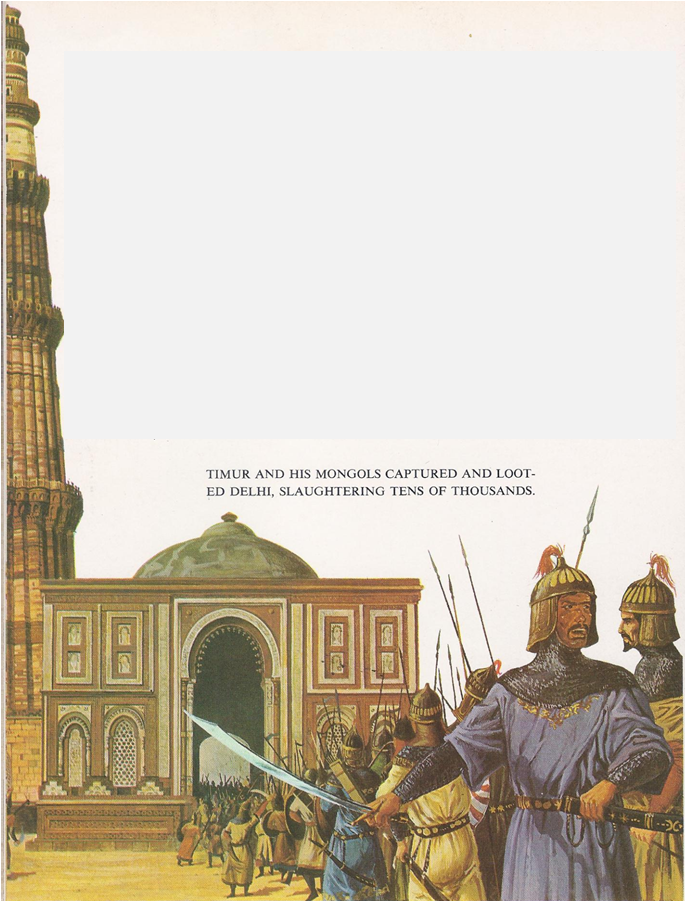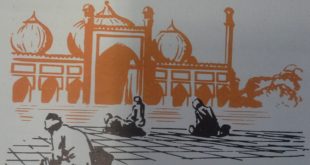IN 711‚ when other Moslem forces were invading distant Spain, Arab soldiers fought their way to the mouth of the Indus River and captured the area called Sind. There they stopped. Nearly three centuries passed before Moslems again menaced India.
In 998, a Turk named Mahmud, the amir of Ghazni in Afghanistan, burst through the Khyber Pass with an army of Turkish horsemen to sweep across the Punjab in the first of seventeen raids.
Not even the savage, pagan Huns had been as bloodthirsty as these civilized sons of Islam. They hated the Hindus with a special hate. Believing in one God and in the equality of all men, they abominated the Indians for their countless gods and idols and their caste system. In a frenzy of righteousness they slew thousands upon thousands of Indians, smashing their temples and demolishing their cities.
The Hindus fought back bravely, but their slow-footed elephants could not keep up with the Turks’ fast horses. They were hindered, too, by the custom which decreed that only members of the warrior caste could fight. Sometimes, when the Hindu defenders of a stronghold saw that the end was near, they carried out a dreadful rite called jauhur. They placed their wives and children on top of a huge pile of wood and set fire to it. Then, as their families were burned alive, they marched forth from the gates, carrying their swords, to meet certain death.
The fearful raids of Mahmud “the imagebreaker” were followed by a large-scale Moslem invasion toward the end of the next century. In 1191, Mohammed Ghori, an Afghan not only raided India but occupied it. By destroying Buddhist universities and massacring their priests, he wiped out Buddhism in the land where it began. Soon he controlled most of the north. When a member of an extremist Moslem sect assassinated him 1206, one of his generals set himself up in Delhi as sultan. The Delhi Sultanate was to last, with one break, until 1526.
THE DELHI SULTANATE
The first Delhi sultans were bold men. Several seized power by murdering the sultans before them. After imposing their rule on the north, they pushed south and conquered the Hindu kingdoms of the Deccan and the coasts. By 1535 nearly all of India was in the hands of these fierce Moslems from Afghanistan. Before long, however, their hold on the country weakened. In 1388 their government fell. It was replaced, as usual, by a multitude of small, warring states.

In 1 398, the dreaded conqueror Timur suddenly appeared in the Punjab at the head of his Mongol horsemen. He attacked city after city, killing and plundering. In sacking Delhi, his men were said to have slaughtered no less than 80,000 people. At last he withdrew, as suddenly as he had come, leaving much of North India in ruins.
Half a century later, in 1450, the Delhi Sultanate was revived, but the second line of sultans was less forceful than the first. Although they regained control of the north, they failed to reunite the old Delhi Empire. The last sultan, Ibrahim Lodi, feared that powerful Afghan nobles in his kingdom were plotting against him. His distrust drove them to rebel. They appealed for help to their countryman Babur, the king of Kabul. Babur’s response led to the foundation of the mightiest state that India had ever known, the Mogul Empire.




